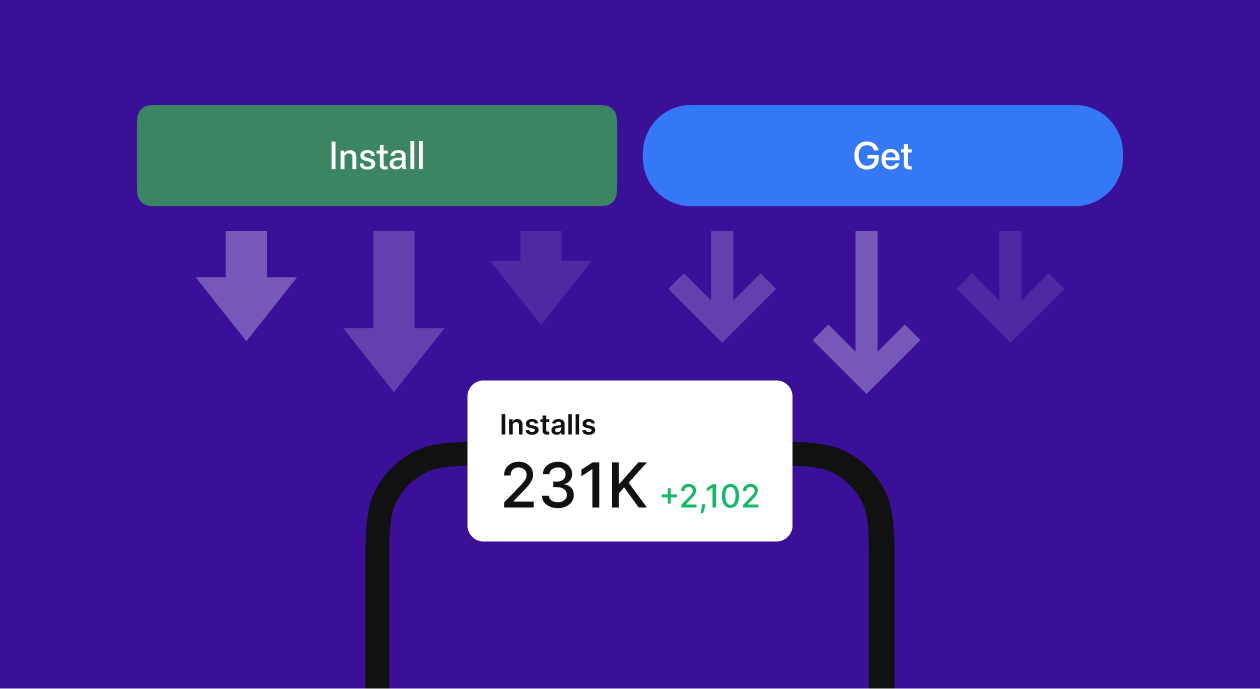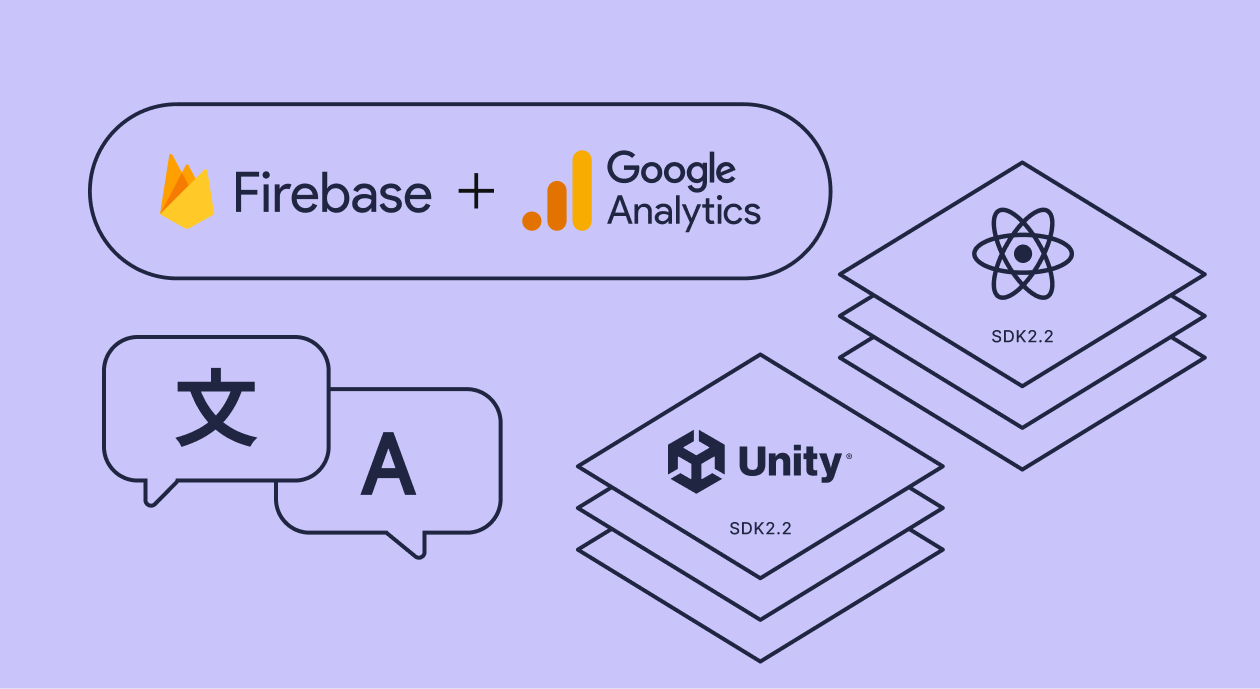
An app’s success is defined by its revenue, which hinges on the number of downloads. High download rates not only reflect an app’s popularity but also its reach and potential profitability. Now that more than a thousand new apps are being published every day on the App Store alone, the competition to the top is even higher.
In this guide we present 12 essential strategies that we at Adapty think will enhance your app’s visibility and appeal, thus increasing download rates and revenue. Each strategy is a step towards achieving success in a crowded marketplace by improving the user acquisition funnel and developing a brand for your app. Remember, though, that with any of these strategies consistent effort and adaptability are key.
1. Optimize App Store listings
Since the App Store is the only destination for iOS users to get their apps (at least for now), your effective presence there is crucial. We have a dedicated guide for the App Store Optimization, but here are the key aspects.
Understand your audience
The way your app is presented in the Store shouldn’t be a vanity fair for the marketing team but rather a response to your audience’s demands. Think about your App Store Page as essentially a Q&A session with the end customers: as they scroll through thousands of apps, they’re trying to answer several simple questions:
- Does this app do what I need to do?
- Will I get the result I need?
- How simple with the communication be?
- How much does it cost?
“Talk” with your end-user by answering his questions in the app description, screenshots, and release notes.
It also makes sense to delve into the demographic and behavioral factors of your audience. For example, it’s almost always worth it to translate the App Store page for the native language of the specific country. The visuals matter too: a gaming app targeted at teenagers will have a different approach compared to a productivity app designed for professionals.
By understanding these aspects, you can tailor your app store listing to resonate with your audience, which increases the chances of engagement and downloads. The factors are several and include the language you use, the features you highlight, and even your chosen visuals. A well-tailored listing. Remember, the more aligned your listing is with your audience’s expectations and needs, the higher the likelihood of your app’s success.
Use relevant keywords
Similar to answering the audience questions, you would also think about how they would search for an app like yours: specifically, what words would they choose. Mentioning these keywords effectively in your app store listing is vital for improving visibility in search results.
The process begins with thorough research to identify keywords that are not only relevant to your app but also commonly used by your target audience when searching for similar apps. Several ASO tools and platforms can aid in this research by providing insights into popular keywords in your app’s category, and Adapty has a dedicated guide about this too.
Once you have identified the keywords, place them in your app’s title, description, and metadata. Don’t be too eager with them, however, and try to balance keyword usage with readability; overstuffing keywords can lead to a negative user experience. The goal is to incorporate them naturally, making your listing both search-friendly and appealing to potential users.
Create a compelling description
We have mentioned writing the description before, but it makes sense to talk about it separately: after all, this is the only piece of copy a person will read before deciding whether to try out your app.
Start with a compelling opening that quickly captures attention: outlining the app’s purpose, what problems it’s made to solve, and who it’s for. It’s important to emphasize the features that set your app apart from competitors, explaining how these unique elements benefit the user (try not to mention the competitors themselves, however; Apple does not condone this). A friendly yet professional tone creates a more relatable and approachable feel, which helps in connecting with your audience.
Incorporating testimonials or positive reviews within the description can significantly enhance credibility and trust. Present key features or benefits in a straightforward manner or bullet points rather than in lengthy paragraphs. A call-to-action at the end, like inviting users to download or explore more, can be very effective. For a more detailed guide on preparing the app description, read our dedicated guide.
Design an eye-catching icon and screenshots
The screenshots you use are also important; if anything, that’s because people might see them in search results even before opening your app’s page. So much so, that we’ve written an article dedicated just to the art of capturing your app.
The term ‘screenshots’ is a bit misleading, though. The images are meant to present the key features of your app and you can do this any way you want to, including before-and-after images or highlighting some specific UI elements; just taking a picture of your app is not enough. Screenshots should provide a visual preview of your app’s interface and functionality but focus just on the key possibilities. It’s also beneficial to add short captions to these screenshots to explain what is being shown.
Before you create the screenshots, though, an eye-catching icon is the first visual contact a potential user has with your app. Think about the icon as the ‘logo’ for your brand: It needs to be distinctive, memorable, and reflective of your app’s purpose. It should stand out in the crowded app store environment and be recognizable on the home screens of other users.
2. Leverage social media marketing
Social media is one of the most effective user acquisition channels, and the reason is quite obvious: we usually consume the content on the same devices we download the apps to, so the friction is zero. Let’s see how this medium might help your app downloads count.
Create shareable content
For almost any app it makes sense to have their own social media presence. And for those that do, it always makes sense to create content that encourages sharing and resonates with your audience.
- Utilize visually appealing graphics, compelling stories, and interactive elements like quizzes or polls to increase engagement. Video is king, so employing Reels and TikTok also bodes well for engagement.
- Content should be easily shareable, with clear calls to action encouraging users to spread the word.
- Use trending topics, humor, or emotional appeal to make your content relatable and share-worthy.
- Analyze which types of posts receive the most interaction and continuously adapt your strategy to align with these insights.
Consistently delivering value will naturally foster sharing across social platforms.
Run targeted ads
Effective social media advertising once again requires a deep understanding of your target audience.
- Utilize the detailed targeting options provided by Meta and TikTok to reach specific demographics, interests, and behaviors.
- Choose ad formats that align with your campaign goals, such as video ads for engagement or carousel ads for showcasing multiple features of your app.
- Implement tracking tools like Facebook Pixel to monitor ad performance and user interactions.
- Regularly analyze the data to refine your targeting and improve ROI.
Remember, the key is to deliver relevant, compelling ads that resonate with your audience, prompting them to explore your app further.
2024 subscription benchmarks and insights
Get your free copy of our latest subscription report to stay ahead in 2024.
3. Collaborate with influencers
Collaborating with influencers is a highly effective strategy for promoting your app, especially when their audience aligns with your app’s target market. This medium becomes even more popular as banner blindness leads more and more people to disregard paid ads. Here’s the plan:
- Find influencers whose following matches your target audience. Look for influencers who already engage with similar content or products, and maybe even have promoted a competitor’s app. Mid-level influencers usually provide the best price-per-audience ratio.
- Once you have a list of potential influencers, analyze their engagement rates. Look at the likes, comments, and shares they receive. High engagement rates often indicate a loyal and active audience, which is more valuable than just a large follower count. If anything, feel free to divide the followers by 10 to get the actual potential audience of your promo.
- Employ a brandformance approach, that combines brand-driven campaigns with performance-based tactics. When discussing collaboration, emphasize that you’re looking for a partnership that not only creates immediate app downloads (performance) but also builds brand awareness and loyalty over time (brand). This will later attract organic downloads, and thus lower the actual promo costs.
- Reach out to influencers with a clear and friendly proposal. Highlight what makes your app unique and why you believe their audience would appreciate it. Be transparent about what you expect from the collaboration and what you are offering in return, whether it’s monetary compensation, free access to your app, or other perks.
- Encourage influencers to create content that tells a story about your app. Ideally, this story should be similar to the situations your audience encounters every day. Storytelling is a powerful tool for making a connection with the audience and can showcase the practical benefits of your app in a relatable way.
- Use tracking links and app analytics to measure the impact of influencer collaborations. This data will help you understand which influencers are driving downloads and engagement, allowing you to adjust your strategy and focus on the most effective partnerships. Remember, though, that a lot of people skip the link and go to the store directly. This is good for you, but bad for the analytics: add 35–50% to the number of downloads to get a more accurate picture.
- Building a good relationship with influencers is key. If a content creator regularly mentions your app (even in paid promo) and also shares their personal experience using it, people tend to believe him and trust the app more.
Remember, the goal is to create a mutually beneficial partnership where influencers genuinely trust your app and thus feel comfortable promoting it. This trust often translates into more authentic and effective ads, that resonate well with the audience and lead to more downloads.
4. Implement referral programs
A referral program, at its core, is a more independent and cost-efficient influencer marketing program. The premise is simple: a person attracts people to your app via a tracked link, and you pay a certain fixed fee for each new user. No overhead, no hustle.
The issue, of course, is that you don’t control the way the app is presented. The links to your app can be scammed all over the internet or abused with a bot farm, leading you to pay thousands of dollars for non-existent or non-active users.
A powerful alternative is to encourage current users to bring in new ones by offering incentives: from in-app credits to premium features. The key is to make the process of referring as simple and as exciting as possible: provide users with a unique referral link or code that they can easily share with friends and family and ensure that the rewards are attractive enough to motivate users to participate.
5. Utilize content marketing
Content marketing differs from social media marketing because it’s not limited to one channel. Your blog can be anywhere, and high-quality, SEO-optimized content related to your app can significantly improve your search engine visibility, driving traffic and downloads. Focus on topics that are relevant to your app’s niche and valuable to your target audience.
You can also “guest post” to well-established platforms, tapping into their existing audience and building backlinks that improve your site’s SEO. Make sure to choose platforms that align with your app’s theme and have an audience likely to be interested in your app.
6. Optimize for search engines
Guest posting is also important for your app’s outside SEO. Not everyone searches for apps in the Store; some use good old search engines, so making sure your app is well presented outside of the App Store is important too. It’s also even more applicable in the case of Google, which indexes both the search engine and the Play Store, sometimes offering the apps in the Google search results.
7. Offer a free trial or demo
If your app is paid, introducing a free version will lead more people to try it before buying. To effectively create and promote a free trial or demo of your app, focus on highlighting its most engaging and valuable features. Ensure the trial period is clear and the transition to the full version is smooth, perhaps with an exclusive offer or discount for those upgrading. This can easily be designed with Adapty’s Paywall Builder.
8. Encourage user feedback
Having a high rating and genuine positive reviews is a must for a successful app and one of the factors that convert viewers into app users. To encourage users to leave positive reviews for your app, ask for feedback at the right time: for example, after they’ve had a meaningful or enjoyable experience. Simplify the review process by providing a direct link to increase the likelihood of users leaving a review. You can also consider ethically incentivizing reviews, but be sure to comply with app store policies.
9. Regularly update the app
Regular updates are crucial for maintaining user interest and attracting new users. Updates should respond to user feedback, fix bugs, and introduce new features. This shows users that you are committed to improving their experience, encouraging loyalty and positive word-of-mouth.
Update notes are also an important communication channel, with the latest update visible on the app page. While mentioning the key features and new possibilities is important, a bit of humor never hurts: show that the app is created by real people and developers, who love what they’re doing and listen to the users’ feedback.
10. Localize the app
As we mentioned in the first section, localizing your app’s language and content is key to connecting with different geographical markets. It goes beyond mere translation; understanding local culture, slang, and preferences ensures the app resonates with users in each specific region. Feel free to introduce local memes, celebrities, or other brands.
This approach shows respect for local nuances and can significantly enhance user experience. It also helps in overcoming language barriers, making the app more accessible and user-friendly. People trust the content in their native language more, so they are more like to download the app
11. Participate in app awards and contests
While not strictly a strategy, participating in app awards and contests is an excellent way to boost both credibility and visibility for your app. Winning or even being nominated lends a stamp of approval from industry experts, which can be a powerful endorsement for potential users. This recognition can be leveraged in marketing and promotional materials, enhancing your app’s reputation.
Being associated with awards and contests also signals to users and potential partners that your app is a noteworthy contender in the tech world. And if anything, it’s just another relatively free source of promotion; and from a high-trusted source at that. The most well-known award is given by App Store itself. Here you can learn the results and our analysis of last year’s finalists and winners.
12. Use analytics to refine strategies
The last one is a meta-strategy that should be employed at all times. Using analytics tools to track app performance, user behavior, and marketing effectiveness is essential for refining your strategies continually. These tools provide valuable insights into how users interact with your app, which features are most popular, and where users may be encountering issues.
And for subscription apps and games, Adapty might be the best tool to provide these statistics.
How Adapty helps to boost app downloads
Adapty is designed to help mobile apps increase their revenue through subscription analytics, A/B testing, and paywall configuration. Here are the key features of the platform:
Paywall A/B Testing allows you to compare several pricing options hassle-free. This way, you can learn in which countries and for which products the prices can be safely modified without a blow to the general revenue model. Adapty seamlessly integrates into both the App Store and Play Store, so even the first setup can be prepared in a couple of days.
Paywall Builder is designed for such a quick deployment of several paywalls. This is an intuitive visual WYSIWYG editor with elements approved both by iOS and Android and native frameworks. With several easy-to-install elements, you can check several hypotheses: from pricing, to benefit description and the CTA.
Subscription Analytics provide crucial data for such decision-making and hypothesizing, showing the successes and failures of each specific subscription product, as well as for the app overall. Once again, the integrations with mobile OSs mean that the data is accurate and up-to-date.
Cohort Analysis, on the other hand, allows for the analysis of the behavior of newcomers, grouped for clarity in temporal cohorts. Seeing people starting to spend more or less as time goes by lets you quickly assess the quality of the acquired users. Even better, the new predictive analytics feature can even hypothesize the potential revenue and LTV of the user base.
All these features are designed first and foremost to monetize the existing users of the app, but improving the offers and quality of usage leads to more people being open to recommending the app to their friends, thus bringing more downloads. And since the final goal of these downloads is the revenue, Adapty is the way to go.
Conclusion
These 12 strategies we have laid out here are the key steps, yet more awaits as your app becomes more and more popular. From influencers and social media to app store and search optimization, there are plenty of ways to make your app seen, known, and trusted.
Using analytics is the key to continuous improvement, and Adapty is the key to getting engagement and performance analytics of your app. Converting attention to downloads, and downloads to revenue is the name of the game.
Recommended posts

Product-releases
February 9, 2023






